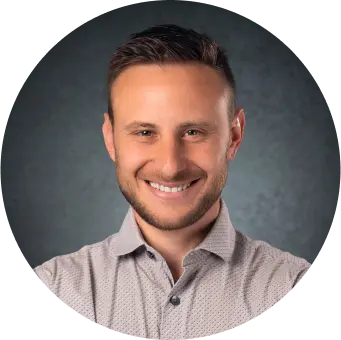Mental Health
Dissociative Identity Disorder Symptoms

Learn about dissociative identity disorder symptoms, including warning signs and challenges, to better understand this complex mental health condition.
Understanding dissociative identity disorder symptoms can feel overwhelming, especially if you or someone you love is struggling. This condition, once called multiple personality disorder, affects memory, behavior, and identity in ways that disrupt daily life.
At The Edge Treatment Center, we know how important it is to recognize the signs early and find the right support. By learning about these symptoms, you can take the first step toward healing and a healthier, more stable future for yourself or your loved one.
Core Symptoms You’ll Notice

Recognizing dissociative identity disorder symptoms starts with understanding the common signs that affect identity, memory, and daily functioning.
Identity Disruption
One of the most noticeable dissociative identity disorder symptoms is the presence of two or more identity states. These “parts” or “alters” may have distinct names, voices, preferences, or mannerisms. Sometimes the changes are subtle—like a shift in tone of voice—while other times they are more obvious, such as a dramatic change in behavior.
Amnesia and Memory Gaps
Many people with DID experience recurrent gaps in memory. This isn’t ordinary forgetfulness. It might involve forgetting conversations, events, or entire periods of time. Some describe it as “losing time” or discovering belongings they don’t remember purchasing.
Depersonalization and Derealization
Another hallmark symptom is feeling detached from oneself or one’s surroundings. Depersonalization can feel like observing life from outside your body, while derealization can make the world feel unreal or distorted.
Other Associated Features
DID is often accompanied by depression, anxiety, sleep disturbances, or self-harm. These struggles can complicate daily life and highlight the need for professional support.
Clearing Up Myths
Contrary to popular media portrayals, DID doesn’t always involve dramatic “movie-style” changes. For many, the shifts between identity states are subtle and easily overlooked.
What Causes or Triggers Symptoms?
To understand DID fully, it’s important to look at both its roots and what can trigger symptoms in daily life.
Childhood Trauma as a Root Cause
The strongest link to DID is repeated or severe childhood trauma. Dissociation becomes a survival mechanism—allowing the child to separate overwhelming emotions or memories into different identity states.
Triggers That Intensify Symptoms
Even years later, certain stressors can worsen DID symptoms. These include:
Major life stress
Sleep deprivation
Relationship conflict
Anniversaries of traumatic events
These stressors can lead to switching, memory loss, or heightened dissociation.
Why Symptoms Appear Later
Although the origins are usually in childhood, symptoms may become more visible in adulthood when life demands—such as work or family responsibilities—make coping harder.

We’re Here To Help You Find Your Way
Would you like more information about mental health or drug addiction? Reach out today.
How DID Is Diagnosed
Because DID is often misunderstood, getting an accurate diagnosis requires careful evaluation from a qualified professional.
DSM-5-TR Criteria
Mental health professionals use the DSM-5-TR guidelines, which require:
Two or more distinct identity states.
Recurrent memory gaps.
Distress or impairment in functioning.
Symptoms not caused by cultural practices, medical conditions, or substances.
The Diagnostic Process
Diagnosis involves clinical interviews, exploring personal history, and sometimes structured assessments. Because DID overlaps with other conditions, it’s often mistaken for PTSD, borderline personality disorder, or schizophrenia.
The Risk of Misdiagnosis
For example, people with DID may hear internal voices, but unlike schizophrenia, these voices are experienced as parts of the self, not external hallucinations. At The Edge Treatment Center, we prioritize thorough, trauma-informed evaluations to ensure you get the right diagnosis and care.
When Symptoms Overlap With Substance Use or Other Conditions

DID rarely occurs in isolation, and many people experience overlapping struggles that need to be addressed together.
Common Co-Occurring Disorders
DID often co-exists with:
Self-harm behaviors
Eating disorders
Sleep disorders
These additional struggles can make symptoms harder to manage.
The Role of Substance Use
Substances may be used to numb emotions or silence internal voices. Unfortunately, alcohol and drugs usually make dissociative symptoms worse and add more health risks.
Why Integrated Treatment Matters
At The Edge Treatment Center, we address both DID and co-occurring conditions at the same time. Treating one without the other rarely leads to long-term recovery.

We’ll Lead You to New Heights
Do you have more questions about mental health or drug addiction? Reach out.
How We Help at The Edge Treatment Center
At The Edge Treatment Center, our treatment approach is designed to meet the unique needs of individuals living with DID and related challenges.
Step 1: Careful Assessment
We begin with a trauma-informed intake that explores your symptoms, personal history, and current challenges. We also assess safety risks and co-occurring issues like substance use or depression.
Step 2: Evidence-Based Psychotherapy
Our therapy doesn’t focus on erasing parts of you. Instead, we work toward stability and cooperation among your identity states. Using trauma-informed techniques, CBT, DBT, and grounding skills, we help you stay present and build healthier coping tools.
Step 3: Integrated Co-Occurring Care
If you are also struggling with addiction or other mental health challenges, we provide comprehensive, coordinated treatment so no part of your recovery is left behind.
Step 4: Safety Planning and Crisis Support
Because DID can involve sudden switching or memory gaps, we create individualized safety plans and involve supportive loved ones when helpful.
Step 5: What Treatment Looks Like
With us, treatment often includes one-on-one therapy, optional group or family sessions, and coordination with outside providers. The goal is long-term stability and a life that feels manageable and meaningful.
What You Can Do If These Symptoms Sound Familiar
If these symptoms resonate with you or someone you love, there are practical steps you can take right now.
Start With Self-Awareness
If you notice DID symptoms in yourself or a loved one:
Keep a journal of time loss, changes in mood, and potential triggers.
Track shifts in identity states and how they affect daily life.
Use Grounding Techniques
Simple tools like deep breathing, focusing on sensory details, or naming items in the room can help during dissociative episodes.
Build Routines
Regular sleep, meals, and daily structure can improve emotional stability and reduce triggers.
Reach Out for Help
Isolation makes symptoms worse. Talking to a trusted friend, family member, or professional can be the first step toward healing. At The Edge Treatment Center, we’re ready to listen without judgment and help you explore the best path forward.

We’re Here To Help You Find Your Way
Do you need advice about mental health or drug addiction? Reach out today.
Why Choose The Edge Treatment Center
When it comes to DID, choosing the right treatment provider can make all the difference in recovery and long-term stability.
Specialized Trauma-Informed Care

Our clinicians are trained in dissociation-aware approaches, ensuring that your care is compassionate, respectful, and effective.
Expertise With Co-Occurring Disorders
Because DID often overlaps with substance use and other conditions, we design treatment plans that address every layer of what you’re facing.
Personalized Recovery Plans
No two people experience DID in the same way. We create individualized plans that reflect your story, goals, and needs.
A Compassionate Approach
We do not treat identity states as “problems to eliminate.” Instead, we honor them as parts of your journey and work toward cooperation, stability, and healing.
A Team That Walks Beside You
When you choose The Edge Treatment Center, you gain a supportive team committed to your recovery. We’ll be with you every step of the way, offering tools, guidance, and hope for a brighter future.
Living with Dissociative Identity Disorder? We Can Help
Dissociative identity disorder symptoms can be overwhelming, but you don’t have to face them alone. With the right care, healing and stability are possible. At The Edge Treatment Center, we offer compassionate, personalized treatment designed to address DID and any co-occurring challenges you may face.
Our team is here to guide you with understanding, expertise, and support every step of the way. If you or a loved one is struggling, reach out to us today—we’ll help you get the care you need to reclaim a healthier, more hopeful future.

We’ll Lead You to New Heights
Would you like more information about mental health or drug addiction? Reach out today.
What Are the Main Dissociative Identity Disorder Symptoms?
The main dissociative identity disorder symptoms include the presence of two or more distinct identity states, noticeable gaps in memory, and dissociation such as depersonalization or derealization. These symptoms can disrupt daily functioning and create significant distress.
How Is DID Diagnosed?
DID is diagnosed through a comprehensive clinical evaluation guided by the DSM-5-TR criteria. A clinician will carefully rule out other mental disorders, substance use, or medical causes that could explain the symptoms before confirming a diagnosis.
Is DID the Same as Schizophrenia or a Personality Disorder?
No. Dissociative identity disorder is not the same as schizophrenia or a personality disorder. While individuals with DID may experience internal voices, these are distinct from the hallucinations seen in psychotic disorders such as schizophrenia.
Can DID Be Treated—And What Does Treatment Involve?
Yes, DID can be treated. Psychotherapy is the primary approach, helping individuals build stability, process trauma, and encourage cooperation among different identity states. Medications may be used to manage co-occurring conditions like depression or anxiety but do not treat DID directly.
What Causes DID?
DID is most often linked to severe, chronic childhood trauma, such as abuse or neglect. Dissociation develops as a protective coping mechanism, allowing the mind to separate from overwhelming experiences when no other defense is possible.

We’re Here To Help You Find Your Way
If you or a loved one is struggling with addiction, there is hope. Our team can guide you on your journey to recovery. Call us today.
Written by
 Brian Moore
Brian MooreContent Writer
Reviewed by
 Jeremy Arzt
Jeremy ArztChief Clinical Officer
Mental Health
October 11, 2025
